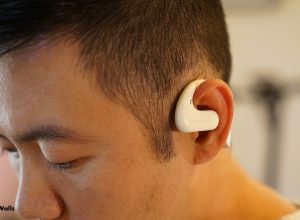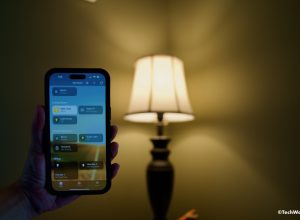John Romkey in 1990 connected a toaster to the internet with TCP/IP protocol. He was the one who connected an appliance for the very first time to the internet. Later on, scientists of the University of Cambridge developed an idea where they connected a web camera prototype to monitor the amount of coffee available in the local computer lab’s coffee pot. The scientists programmed the webcam in such a way that it took pictures of the coffee pot three times every minute. It then sent these pictures to the local computers, enabling everyone to see how much coffee was available in the coffee pot. These attempts were the first-ever on IoT development.
The early uses of the Internet of Things (IoT) were centred towards industrial applications such as enhancing business operations with autonomous machines. Fitbit was the only standalone consumer product at that time.
However, times have changed as we now see that there are more human-centric categories for IoT development emerging. The focus has now moved to personal augmentation from industry. Now it is more about the service that an IoT can provide than the individual device itself. Users can now configure the device according to their liking.

To explain the service aspect of IoT, let me take an example of the smart home solutions that a combination of IoT devices can provide a user. A user can connect his car to the smart locking system of his garage door. The smart locking system can be connected to the lighting system of the house and the thermostat. So when the user parks his car in this driveway the garage door automatically opens up, triggering the thermostat which is programmed to set a temperature to the user’s liking. The smart lock at the garage door also triggers the lighting system of your house. So when the user parks his car, the garage door opens, turning on the light of the house and sets the thermostat to a specific temperature.
As there are new innovations in the field of IoT development we can see that the people using IoT are looking for a more personalized experience with it. They also want IoT to give them a personalized experience in different contexts, for example, smart home solutions to make home life easier, pleasant and distinctive, and smart health devices to monitor their health.
How are people using IoT?
Users today don’t want to type in instructions, or alter any setting on their smartphones or interact with a device to get what they want. Connected IoT devices provide services that can be categorized under the term “living service” which is what is expected by IoT users nowadays. The user expects “living service” technologies to foresee their wants and act on them.
Security System
There are around 2.5 million burglaries committed in the US every year. People want their houses to be safe. There are a lot of companies in this area coming with a more sophisticated security system every day. For example, a security solution company called Presence came up with a solution that converts your old phones (Android and iPhones) into home security cameras. It enables you to connect your smartphone or PC to these old phones with functioning cameras, allowing you to have a clear view of your home, remotely. There are companies that are working on more comprehensive security solutions. Take for example SmartLabs and Microsofts who have developed a kit for homeowners where homeowners can remotely control surveillance cameras and motion sensors at their homes using Internet Protocols. They can monitor their houses from anywhere, and can see anyone entering their houses or leaving. They can even monitor an elderly person or a sick child. Other products such as Apple’s HomeKit and Google’s Nest, are also working on technologies that can help its users monitor their homes with the services that they already provide.
Self-measurement
People today want data that can help them understand themselves. They want to establish a comparison with others in terms of BMI (Body Mass Index) and emotional intelligence etc. There are various types of IoT development on various self-measurements aspects and there are people who want to know the numbers which they offer. Self-quantification apps are one of the most downloaded IoT applications at home. An example of self-measurement could be, tracking our level of daily activity or sleep patterns, and looking at dashboard analytics to better understand the data recorded. Ultimately helping us understand ourselves better and take valid actions regarding it. Wearables with sensors and software capable of recording these vitals stat are among the Internet-enabled consumer products that have dominated this space since their launch.
Smart Machines
IoT nowadays is becoming prominent as people are loving the things it can do. People like IoT because it can automatically do the thing that they would have to do manually. A good example would be the smart house solutions. The lights of the house can automatically be turned on as the sun sets. These IoT devices can optimize the way we live-saving us time and money. Also, there are some new products that can automatically turn on and adjust heaters, air-conditioners and other devices that use electricity. Enriching the quality of life. Tech giants like General Electric and Whirlpool are investing in the addition of new-age sensors and other internet technologies to home appliances as they are aware of the rise in demand in the future. This being another area where we might allow these devices and appliances to track our behaviours and patterns so that they can learn about our likes and dislikes so that they can predict our needs.
Enhanced Experience
Today only a few people can afford to spend additional thousands of dollars in embedding their homes with sensors. However, as IoT development scales up and becomes more common, many of the experiences which were thought unreal would become reality and affordable. These could be IoT platforms with sensors and smart devices connected to focus on environmental aspects such as sound, visuals and temperature. One of the most common examples of this would be the Phillips Hue Lighting system which is an internet-enabled light. It connects to the Weather Channel and turns blue when it starts to rain. With living services, these devices are connected over the internet and interact using sensor technology. You may ask yourself, what is the use of such a technology? Imagine being a writer who likes to enhance his focus by listening to classical music and working in natural light. Imagine he doesn’t have to manually do any of these activities as various devices can do it for him automatically. These technology experiences can make homes feel unique.
Conclusion
With the advancements in sensor technology, the internet and IoT devices, there is a lot of open space where IoT manufacturers and businesses can leverage the power of IoT. Not only from home improvement but also in businesses IoT has shown potential that can make our time and money more effective and life easy. This is just a glimpse of the digital service that will gradually increase and be a part of our homes, offices and anywhere in the future.
Author Bio: Nora is a copywriter and content writer for Daffodil Software. She specializes in ghost blogging, email marketing campaigns, and content for sales pages. She works closely with B2C and B2B businesses providing digital marketing content that gains social media attention and increases your search engine visibility.
Disclosure: We might earn commission from qualifying purchases. The commission help keep the rest of my content free, so thank you!



